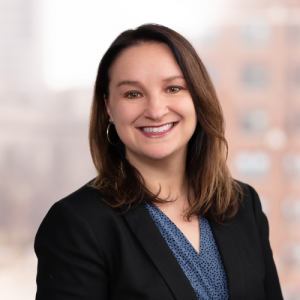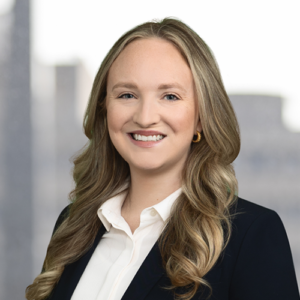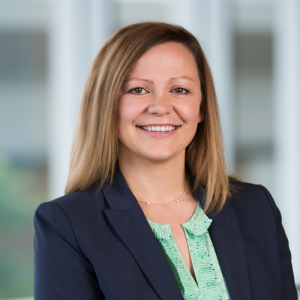On November 2, 2021, the Centers for Medicare and Medicaid Services (“CMS”) issued its CY 2022 Medicare Physician Fee Schedule (“MPFS”) Final Rule. Simultaneously, CMS released its CY 2022 Outpatient Prospective Payment System (“OPPS”) Final Rule with comment period. Below is a high-level summary of significant changes established by the MPFS Final Rule. For further detail on the OPPS Final Rule, please refer to our client alert available here. Note, payment policy changes established under each respective rule will become effective January 1, 2022.
Significant Policy Updates Established under the MPFS
Evaluation and Management (E/M) Services
Split/Shared Visits
CMS has codified the payment policy that when an E/M visit is provided in an institutional setting in part by a physician and Non-Physician Practitioner (“NPP”) who are members of the same group, the visit is to be billed by the physician or NPP who provides the substantive portion of the visit. For 2022, the definition of “substantive portion” is defined as either the history, physical exam, medical decision-making or more than half of the total time. However, as of 2023, this definition will strictly be defined as more than half of the total time spent. CMS also finalized its proposal to allow physicians and NPPs to report split/shared visits for new or established patients, so long as a modifier is used to identify the services and documentation included in the medical record to identify the two individuals that performed the visit. The physician or NPP that provided the substantive portion must sign and date the medical record. Split/Shared E/M payment guidelines were previously only articulated in CMS Manual guidance; however, CMS is now codifying these revised policies at 42 CFR § 415.140.
Critical Care Services
CMS finalized modifications to established policies to allow critical care services to be performed for the same patient on the same day simultaneously by multiple practitioners representing multiple specialties, and can even be furnished as split/shared visits so long as the services are medically necessary. Critical care services may be paid on the same day as an E/M service so long as the practitioner documents in the medical record that the E/M visit was provided first and at a time when the patient did not require critical care, and the services were separate and distinct with no duplicative elements. Critical care can even be paid separately in addition to a procedure with a global surgical period if the critical care is unrelated to the surgical procedure. CMS is creating a new modifier to use on such claims to identify that critical care is unrelated to the global billing procedure. If care is fully transferred from the surgeon to an intensivist (and the critical care is unrelated), the appropriate modifiers must also be reported to indicate the transfer of care. Medical record documentation must support the claims.
Telehealth Services under the MPFS
CMS finalized that it will extend the inclusion of certain temporary Medicare telehealth services to the list of covered services through the end of CY 2023. Further, coverage for certain mental health services will be made permanent but CMS is finalizing the requirement that there must be an in-person, non-telehealth service with the physician or NPP within six (6) months prior to the initial telehealth service. CMS is also finalizing its requirement that an in-person visit must be performed every 12 months to be eligible for certain telehealth services, while also establishing some need-based exceptions to this rule.
Additionally, CMS is amending the current definition of an interactive telecommunications system for telehealth services to include audio-only communications technology when used for telehealth services for the diagnosis, evaluation or treatment of mental health disorders furnished to established patients under certain circumstances. Note, audio-only interactive telecommunications systems will be limited to mental health services furnished by practitioners who have the capability of furnishing two-way audio/video communications, but where the beneficiary is not capable of or does not consent to the use of two-way audio/video technology. A new modifier must be used for such services.
Therapy Services
For dates of service on or after January 1, 2022, CMS is implementing new modifiers (CQ and CO) to identify and make payment at 85% of the otherwise applicable Part B payment amount for physical therapy and occupational therapy services furnished in whole or in part by physical therapy/occupational therapy assistants when they are appropriately supervised by a physical or occupational therapist, respectively. CMS is also revising the de minimis standard to establish guidance for billing 15-minute timed services in a physical therapy or occupational therapy setting with the use of assistants.
Billing for Physician Assistant (“PA”) Services
As of January 1, 2022, Medicare will be authorized to directly pay PAs (and for PAs to directly bill) for their services under Part B, PAs can reassign payment for their professional services, and incorporate with other PAs and bill Medicare for PA services.
Teaching Physician Services
In CY 2021, CMS finalized the AMA CPT office/outpatient E/M visit coding framework to provide that practitioners can select the appropriate office/outpatient E/M visit level based on either total time personally spent by the reporting practitioner or based on medical decision making (“MDM”). Under existing Medicare guidelines, when a resident participates in providing services in a teaching setting, the teaching physician can bill for the service only when they are present for the key or critical portion of the service. For CY 2022, CMS finalized and clarified that when time is used to select the level of E/M service billed, only the time spent by the teaching physician in qualifying activities, such as time that the teaching physician was present with the resident performing the services, can be included in the E/M level selection. Note, however, under the “primary care exception”, time cannot be used to select the visit level. Only MDM may be used to select the E/M visit level, to guard against the possibility of inappropriate coding that reflects residents’ inefficiencies rather than a measure of the total medically necessary time required to furnish the E/M services.
Coverage and Payment for Medical Nutrition Therapy Services and Related Services
For CY 2022, CMS is establishing new regulations at 42 CFR § 410.72 to describe the services of Medical Nutritional Therapy (“MNT”) professionals. The payment regulations for MNT services at 42 CFR § 414.64 are being updated to clarify the proper payment rate, which is 100 percent (rather than 80 percent) of 85 percent of the MPFS amount, without any cost-sharing. CMS is also removing the requirement that a MNT referral be made by the “treating physician” thereby expanding which physicians can make referrals to MNT services.
Hall Render attorneys are currently analyzing the Final Rule and will issue more detailed, specific content as it develops.
If you have questions, please contact:
- Regan Tankersley at (317) 977-1445 or rtankersley@wp.hallrender.com;
- Lisa Lucido at (248)-457-7812 or llucido@wp.hallrender.com;
- Kaitlin Nucci at (248) 457-7838 or knucci@wp.hallrender.com;
- Lauren Hulls at (317) 977-1467 or lhulls@wp.hallrender.com;
- Kathryn Costanza at (303)-801-3534 or kcostanza@wp.hallrender.com; or
- Your primary Hall Render contact.
Hall Render blog posts and articles are intended for informational purposes only. For ethical reasons, Hall Render attorneys cannot—outside of an attorney-client relationship—answer specific questions that would be legal advice.




